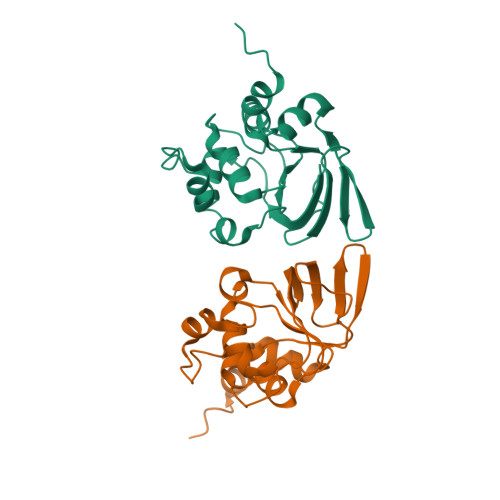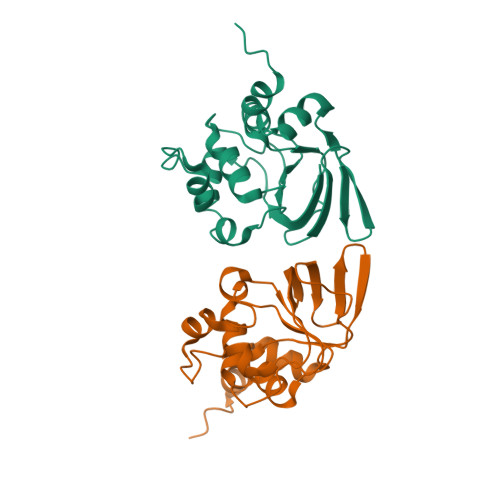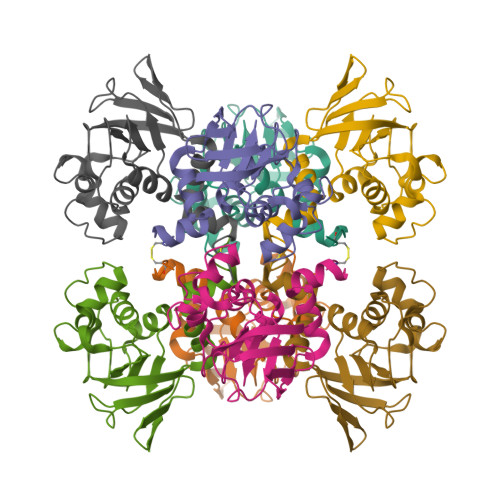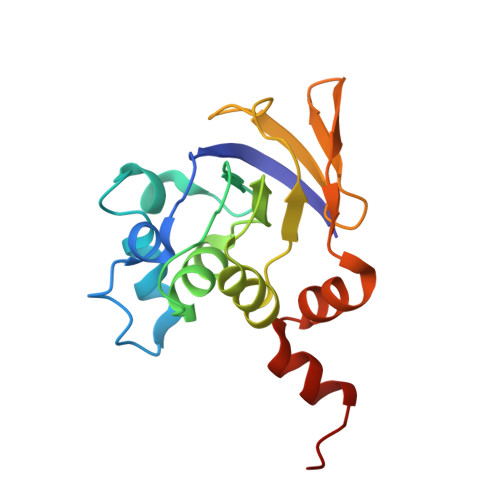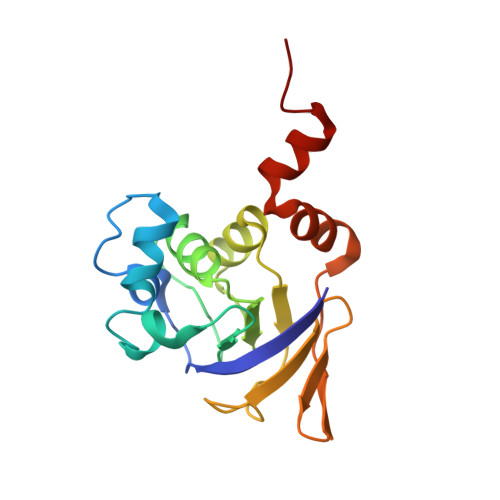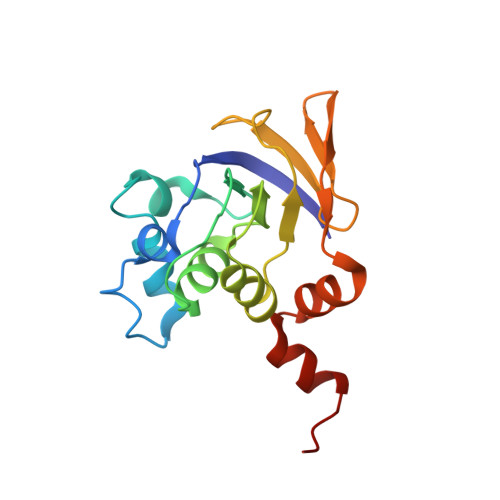Crystal Structure of the Pyrococcus horikoshii Isopropylmalate Isomerase Small Subunit Provides Insight into the Dual Substrate Specificity of the Enzyme
Yasutake, Y., Yao, M., Sakai, N., Kirita, T., Tanaka, I.(2004) J Mol Biology 344: 325-333
- PubMed: 15522288
- DOI: https://doi.org/10.1016/j.jmb.2004.09.035
- Primary Citation of Related Structures:
1V7L - PubMed Abstract:
Recent studies have implied that the isopropylmalate isomerase small subunit of the hyperthermophilic archaea Pyrococcus horikoshii (PhIPMI-s) functions as isopropylmalate isomerase in the leucine biosynthesis pathway, and as homoaconitase (HACN) in the lysine biosynthesis pathway via alpha-aminoadipic acid. PhIPMI is thus considered a key to understanding the fundamental metabolism of the earliest organisms. We describe for the first time the crystal structure of PhIPMI-s, which displays dual substrate specificity. The crystal structure unexpectedly shows that four molecules create an interlocked assembly with intermolecular disulfide linkages having a skewed 222 point-group symmetry. Although the overall fold of the PhIPMI-s monomer is related closely to domain 4 of the aconitase (ACN), one alpha-helix in the ACN structure is replaced by a short loop with relatively high temperature factor values. Because this region is essential for discriminating the structurally similar substrate based on interactions with its diversified gamma-moiety, the loop structure in the PhIPMI-s must be dependent on the presence of a substrate. The flexibility of the loop region might be a structural basis for recognizing both hydrophobic and hydrophilic gamma-moieties of two distinct substrates, isopropylmalate and homocitrate.
Organizational Affiliation:
Division of Biological Sciences, Graduate School of Science, Hokkaido University, Kita-10, Nishi-8, Kita-ku, Sapporo, Hokkaido 060-0810, Japan.








